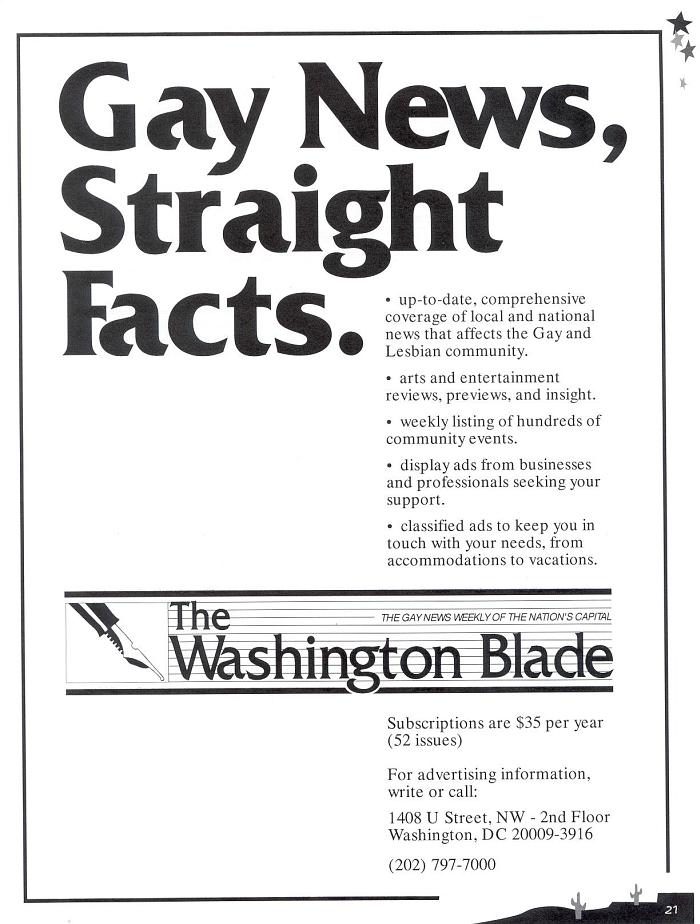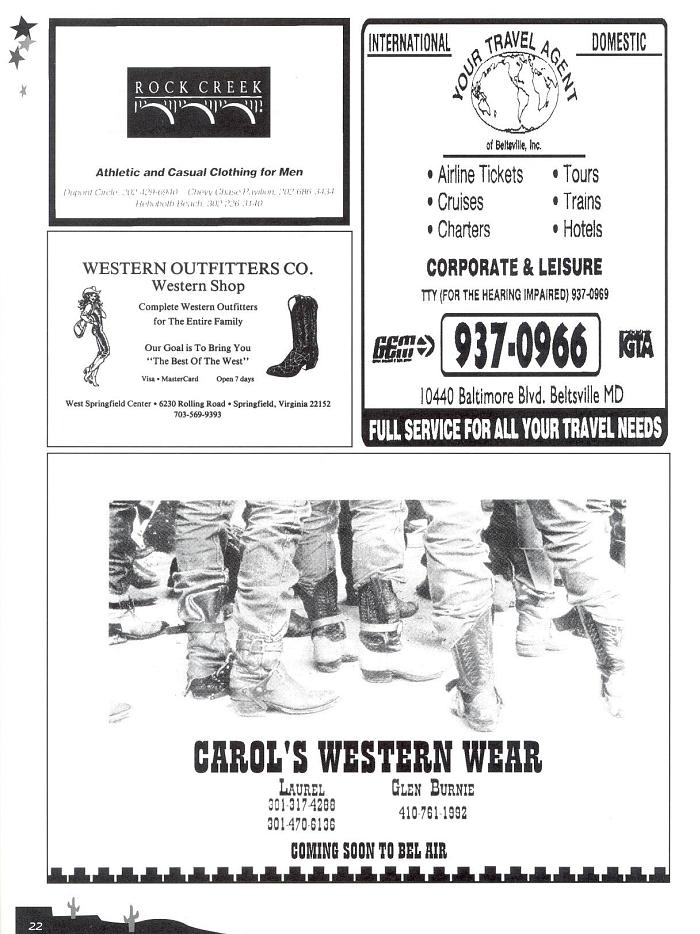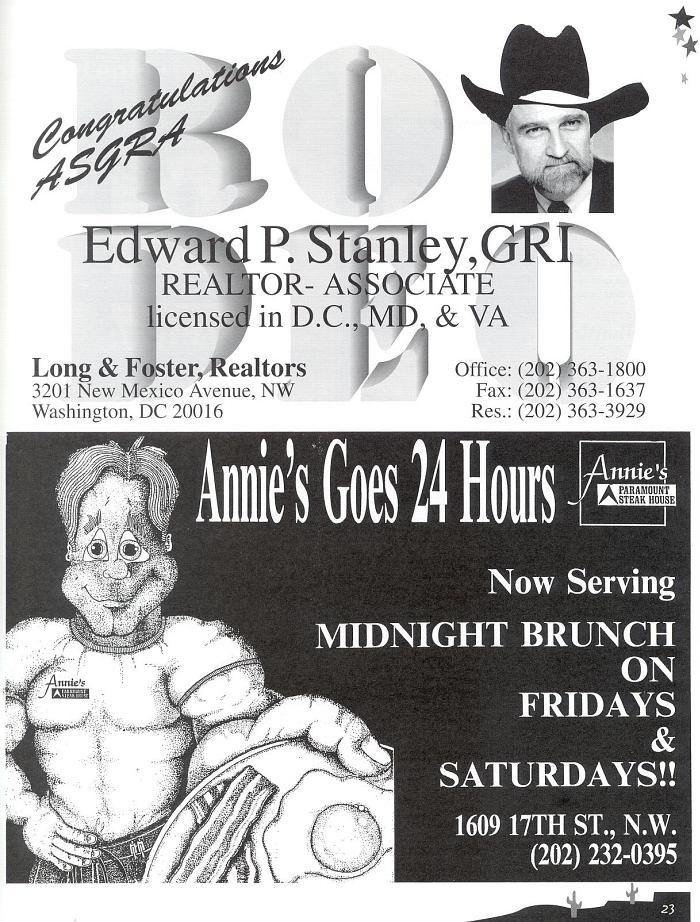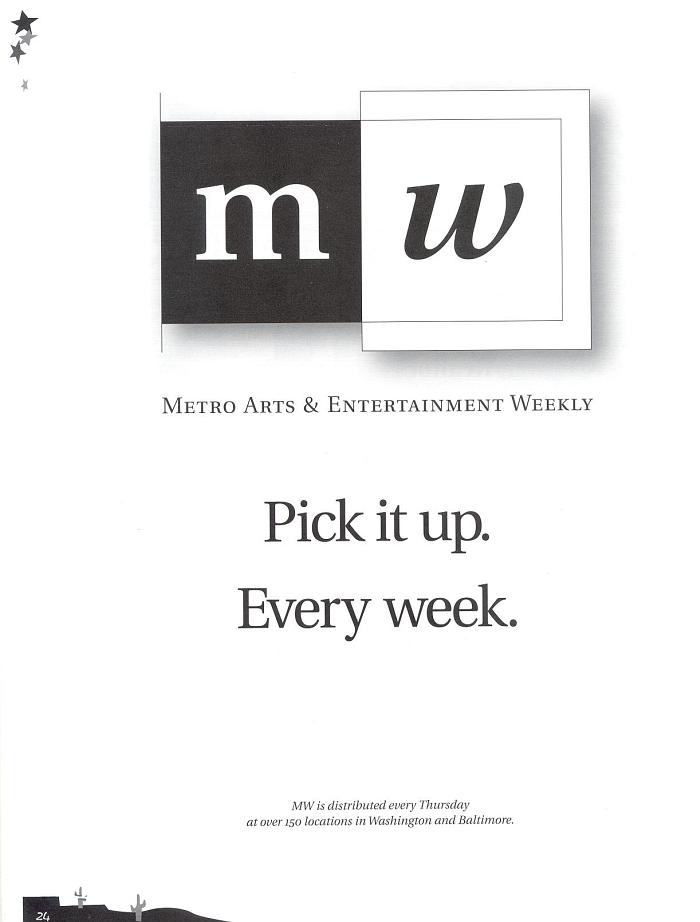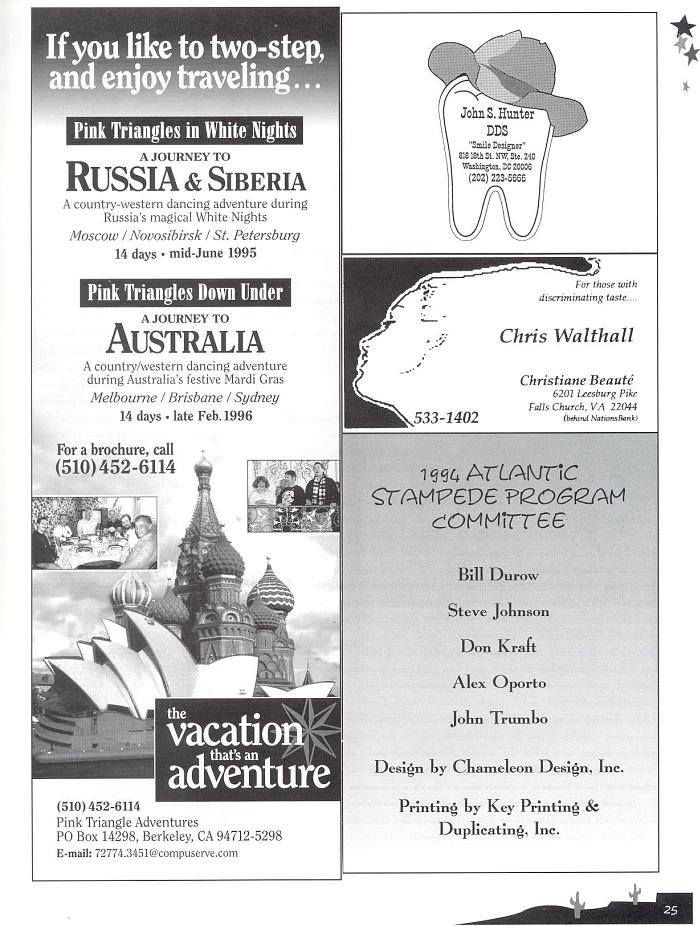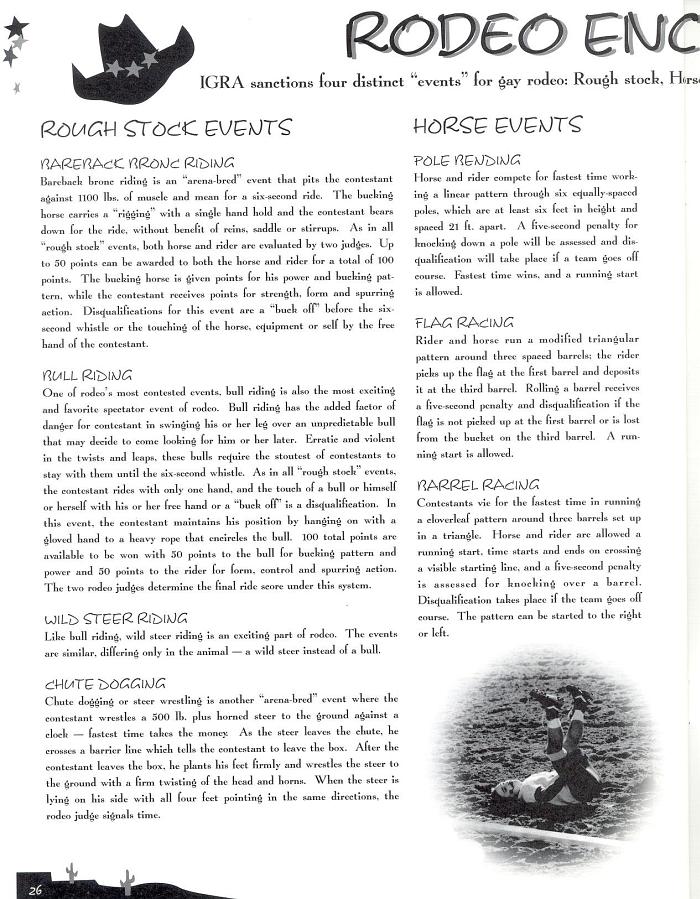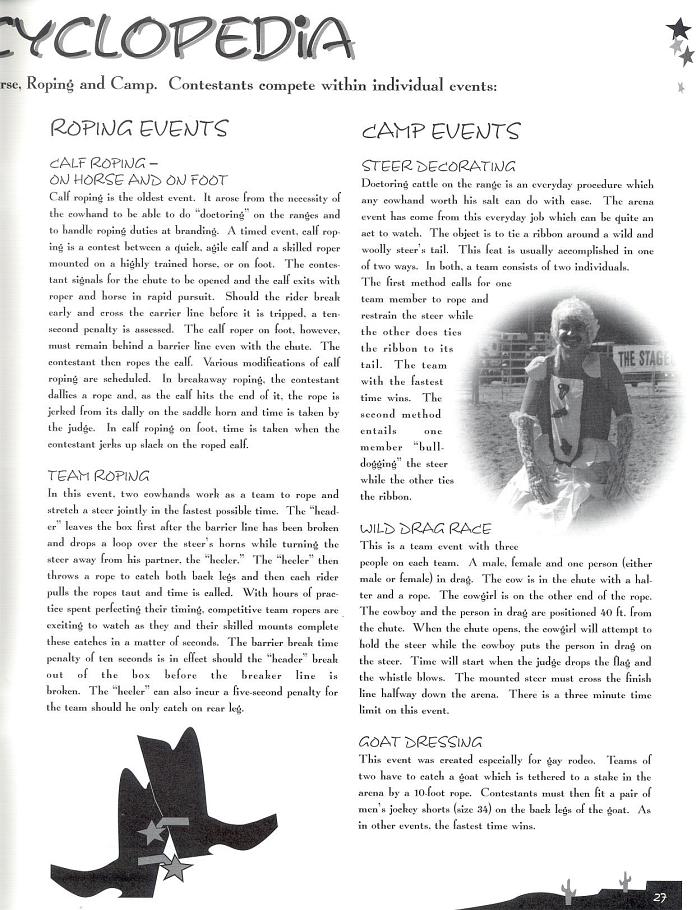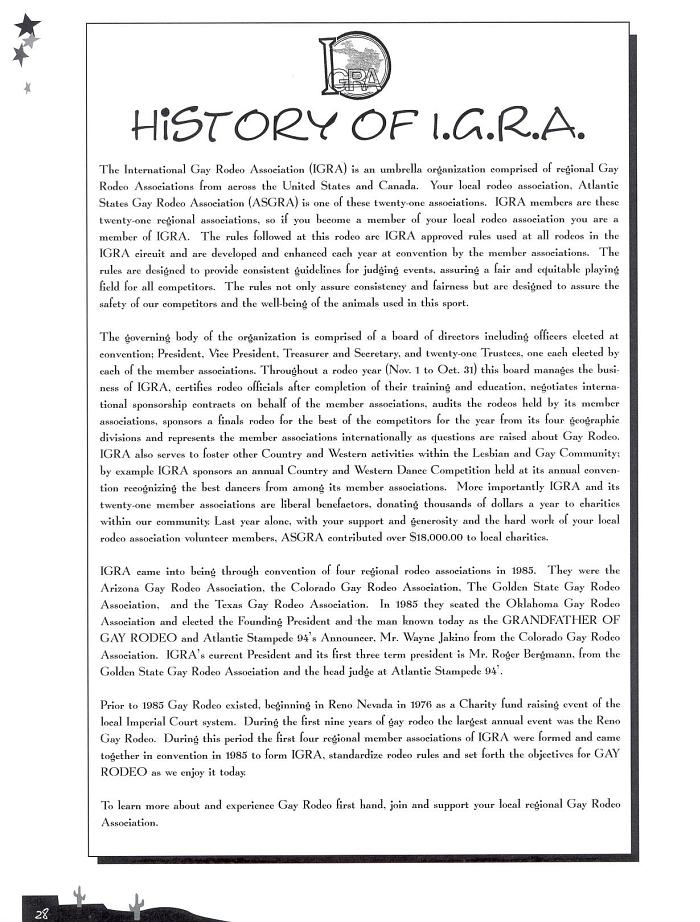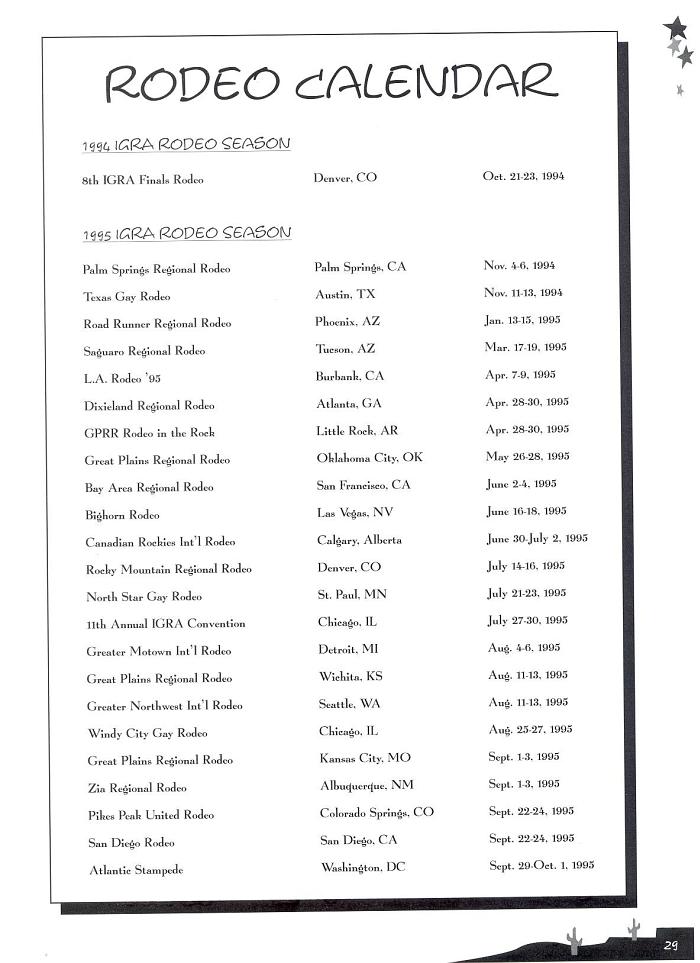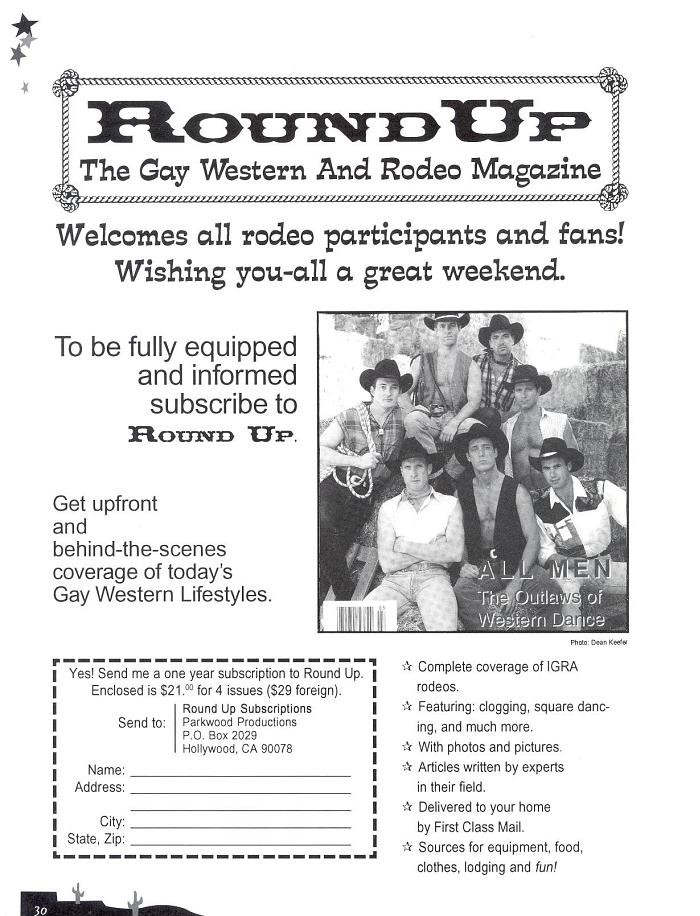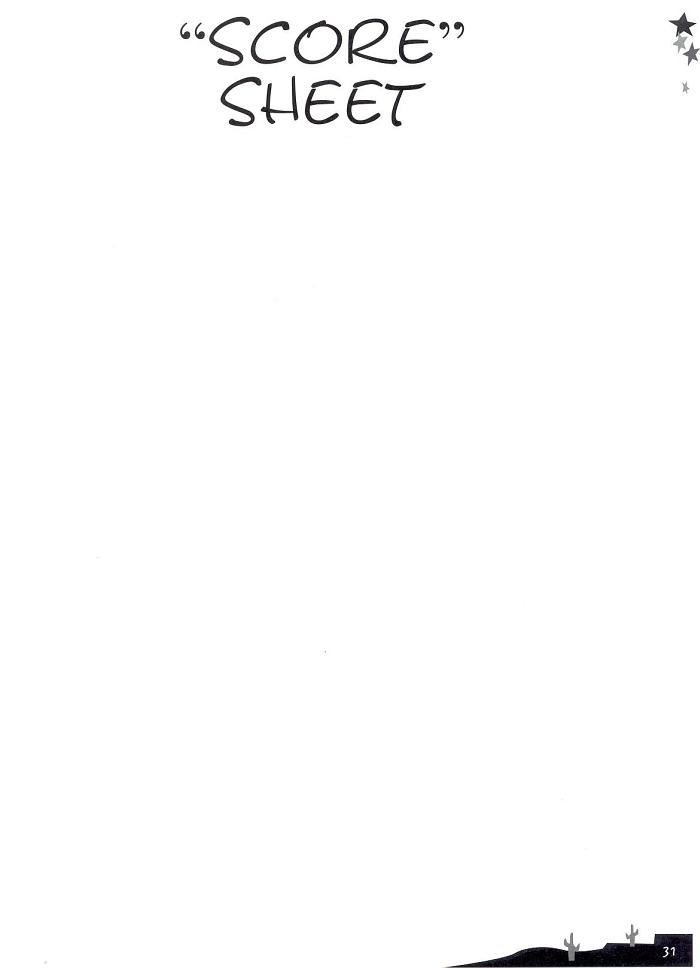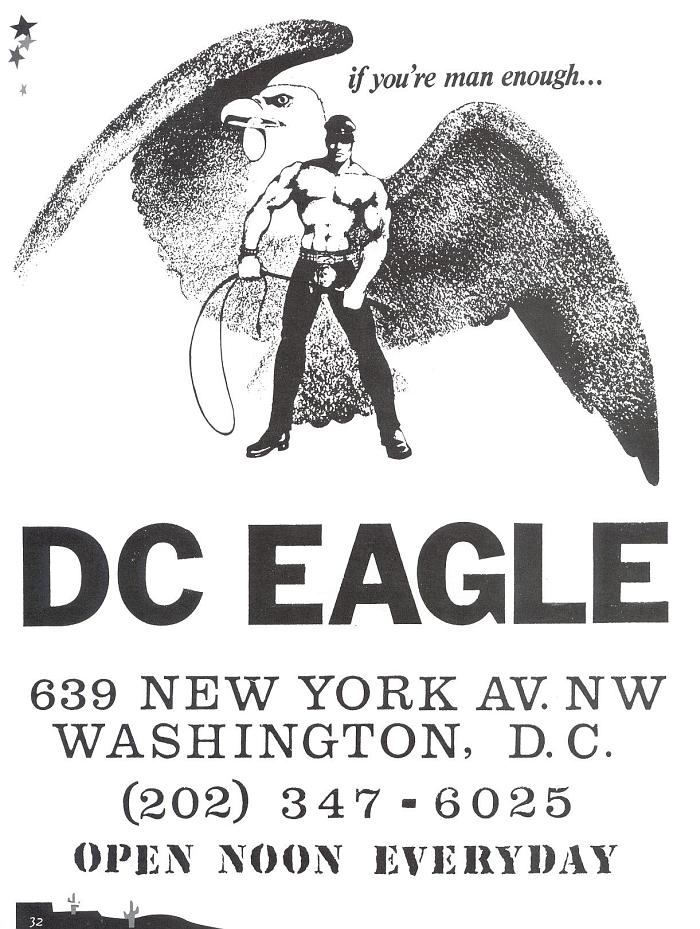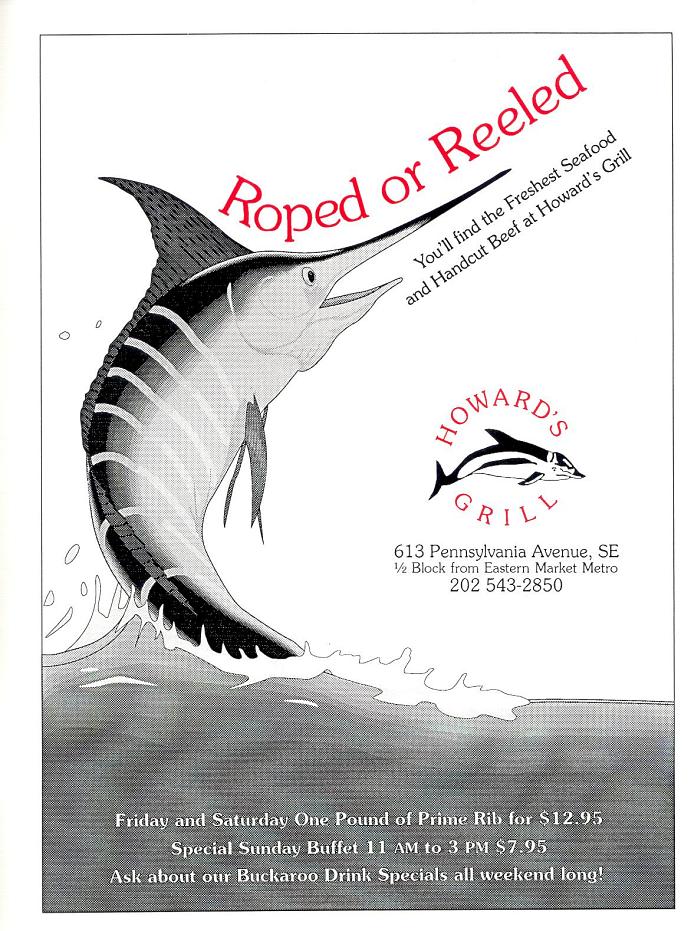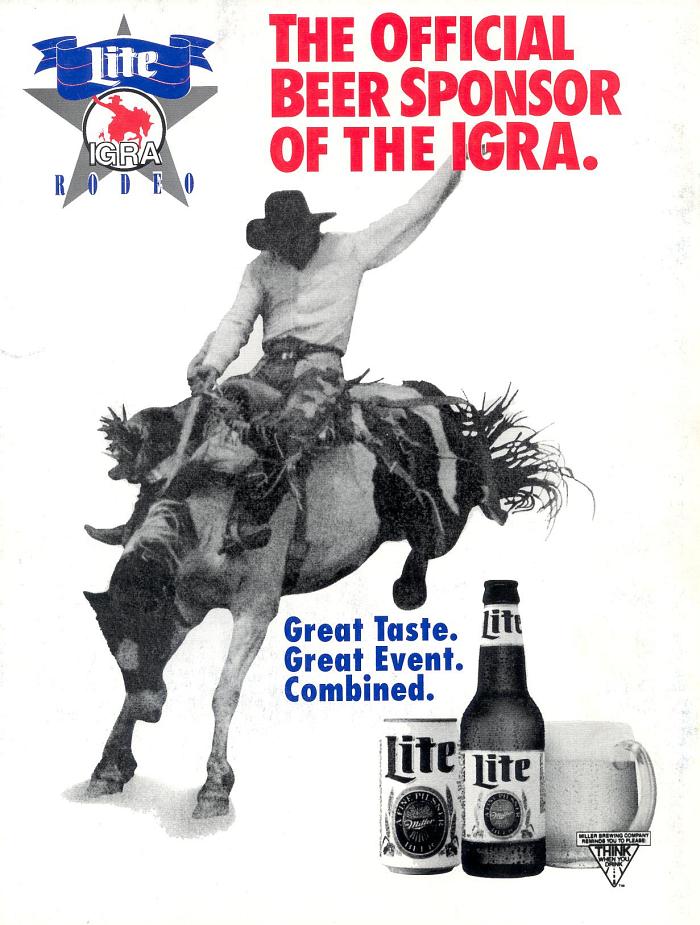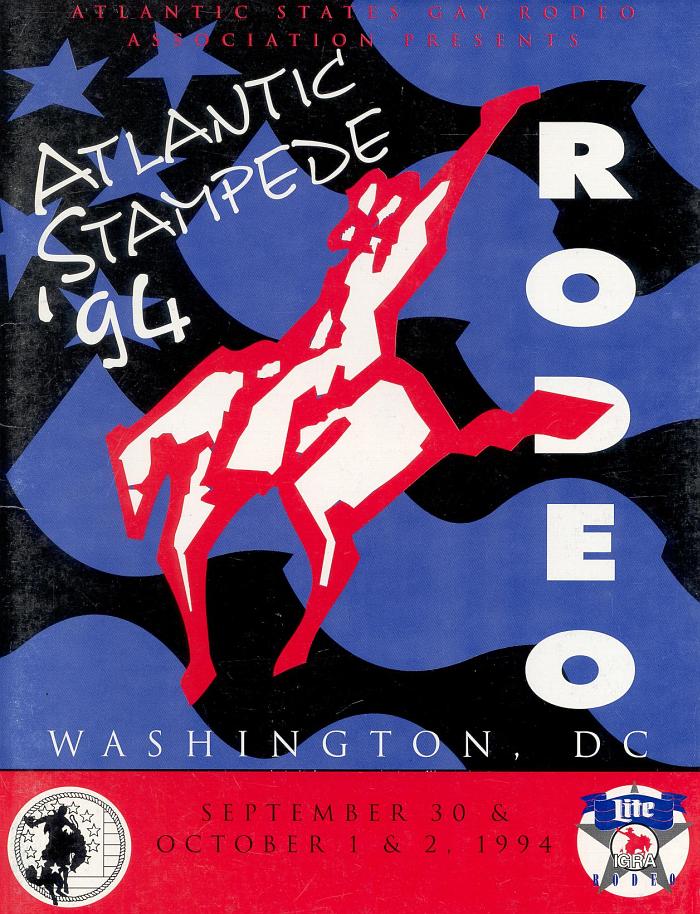
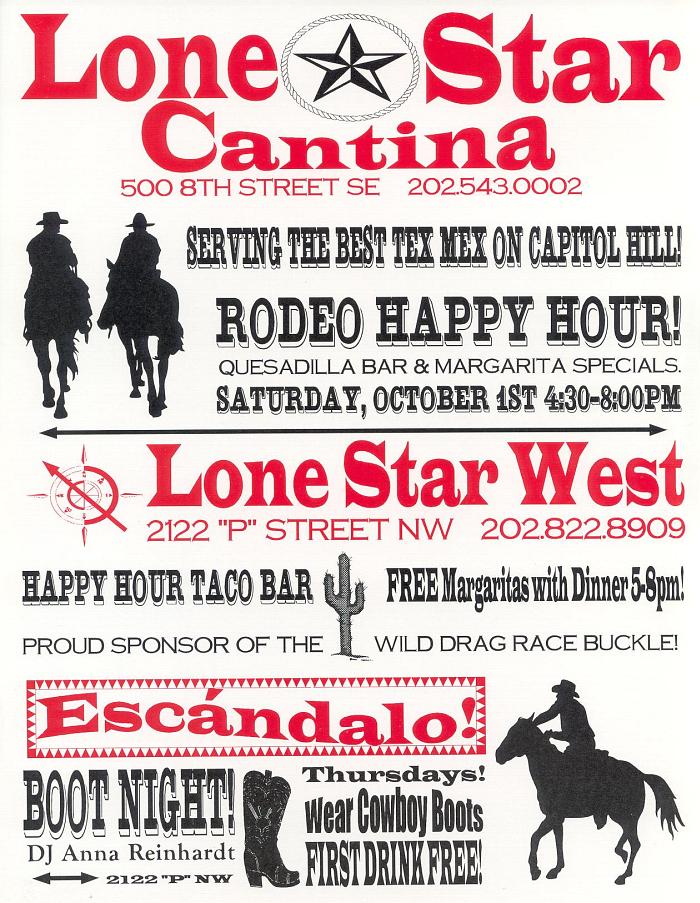
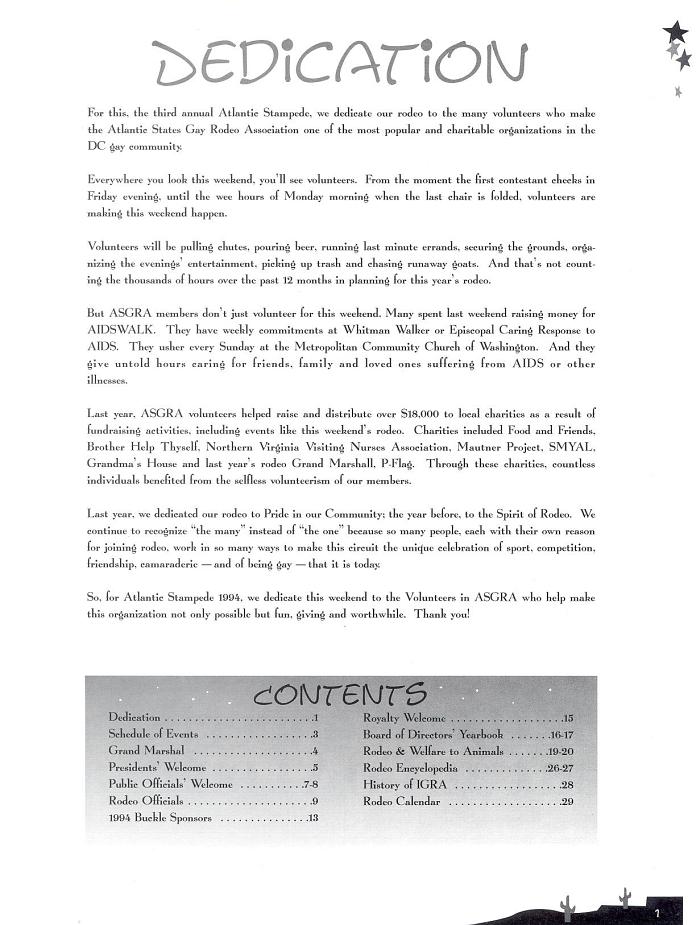
Dedication
For this, the third annual Atlantic Stampede, we dedicate our rodeo to the many volunteers who make the Atlantic States Gay Rodeo Association one of the most popular and charitable organizations in the DC gay community.
Everywhere you look this weekend, you'll see volunteers. From the moment the first contestant checks in Friday evening, until the wee hours of Monday morning when the last chair is folded, volunteers are making this weekend happen.
Volunteers will be pulling chutes, pouring beer, running last minute errands, securing the grounds. Organizing the evening's entertainment, picking up trash and chasing runaway goats. And that's not counting the thousands of hours over the past 12 months in planning for this year's rodeo.
But ASGRA members don't just volunteer for this weekend. Many spent last weekend raising money for AIDS\WALK. They have weekly commitments at Whitman Walker or Episcopal Caring Response to AIDS. They usher every Sunday at the Metropolitan Community Church of Washington. And they give untold hours caring for friends, family and loved ones suffering from AIDS or other illnesses.
Last year, ASGRA volunteers helped raise and distribute over $18,000 to local charities as a result of fund raising activities, including events like this weekends rodeo. Charities included Food and Friends, Brother Help Thyself, Northern Virginia Visiting Nurses Association, Mautner Project, SMYAL, Grandma' s House and last year's rodeo Grand Marshall, P-Flag. Through these charities, countless individuals benefited from the selfless volunteerism of our members.
Last year, we dedicated our rodeo to Pride in our Community; the year before, to the Spirit of Rodeo. We continue to recognize "the many" instead of "the one" because so many people, each with their own reason for joining rodeo, work in so many ways to make this circuit the unique celebration of sport, competition, friendship, camaraderie, and of being gay, that it is today.
So, for Atlantic Stampede 1994, we dedicate this weekend to the Volunteers in ASGRA who help make this organization not only possible but fun, giving and worthwhile. Thank you!
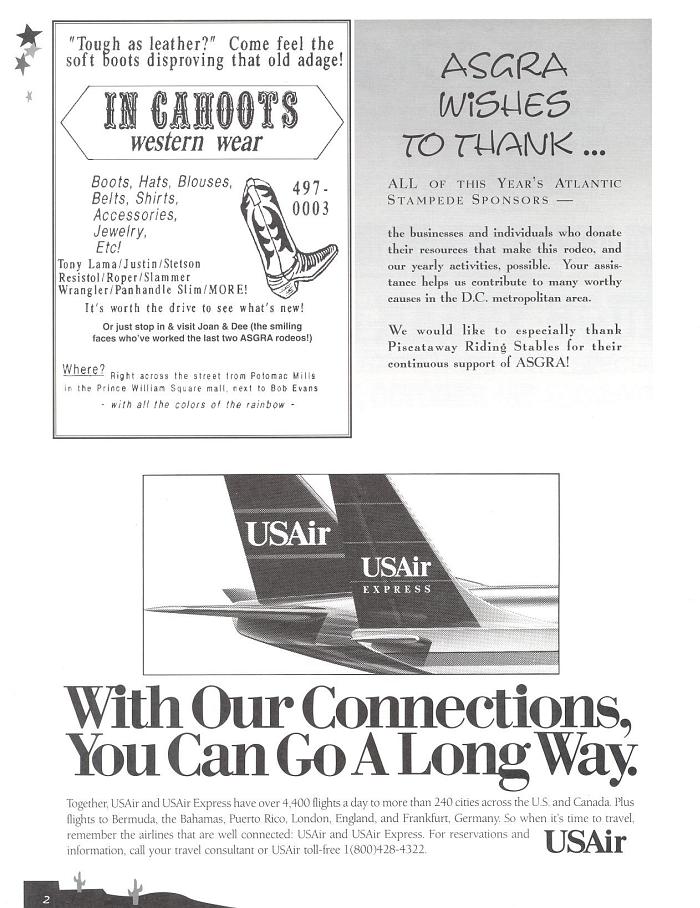
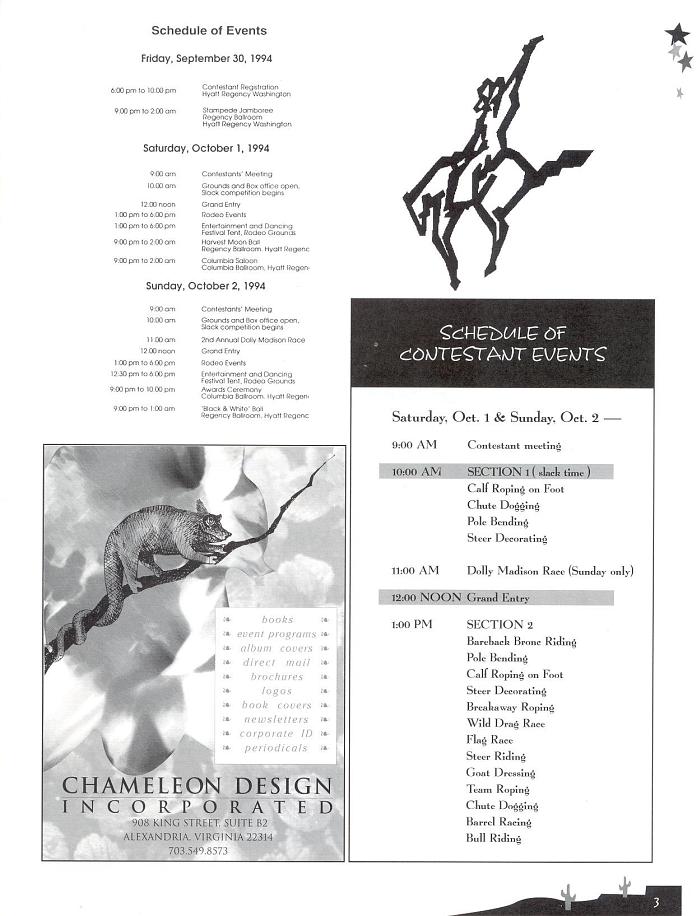
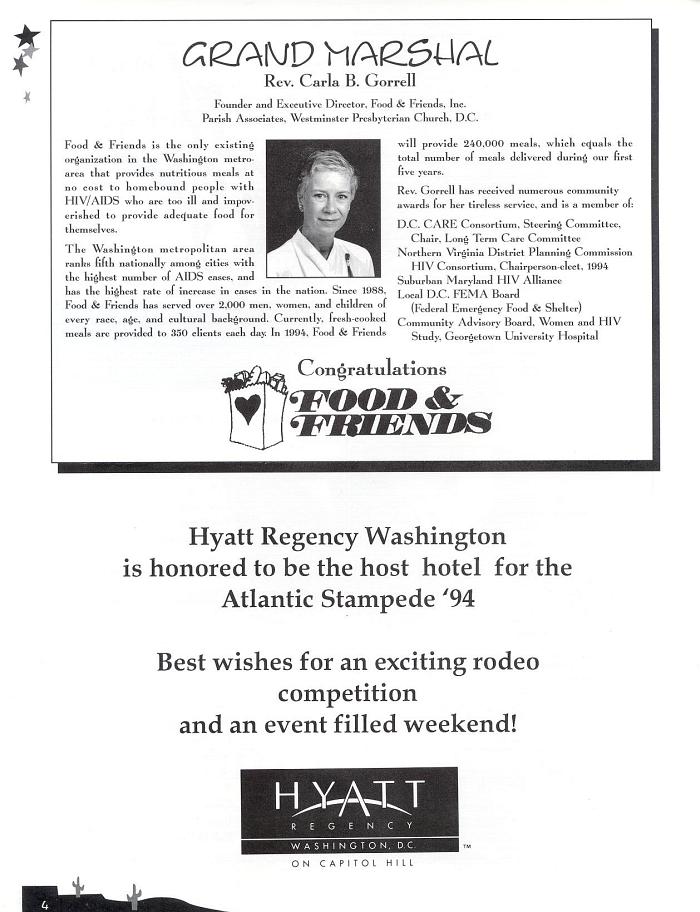
Grand Marshal
Rev. Carla B. Gorrell
Founder and Executive Director. Food & Friend, lnc.
Parish Associates. Westminster Presbyterian Church. D.C.
Food & Friends is the only existing organization in the Washington metro area that provides nutritious meals at no cost to homebound people with HJV / ATDS who are too ill and impoverished to provide adequate food for themselves.
The Washington metropolitan area ranks fifth nationally among cities with the highest number of AIDS cases, and has the highest rate of increase in case;; in the nation. Since 1988, Food & Friends has served over 2.000 men, women, and children of every race, age, and cultural background. Currently, fresh-cooked meals are provided lo 350 clients each day. In 1994, Food & Friends will provide 240.000 meals, which equals the total number of meals delivered during our first five years.
Rev. Gorrell has received numerous community awards for her tireless service, and is a member of:
D.C. CARE Consortium. Steering Committee,
Chair. Long Term Care Committee
Northern Virginia District Planning Commission
HIV Consortium, Chairperson-elect. 1994
Suburban Maryland HIV Alliance
Local D.C. FEMA Board (Federal Emergency Food & Shelter)
Community Advisory Board. Women and HIV Study, Georgetown University Hospital
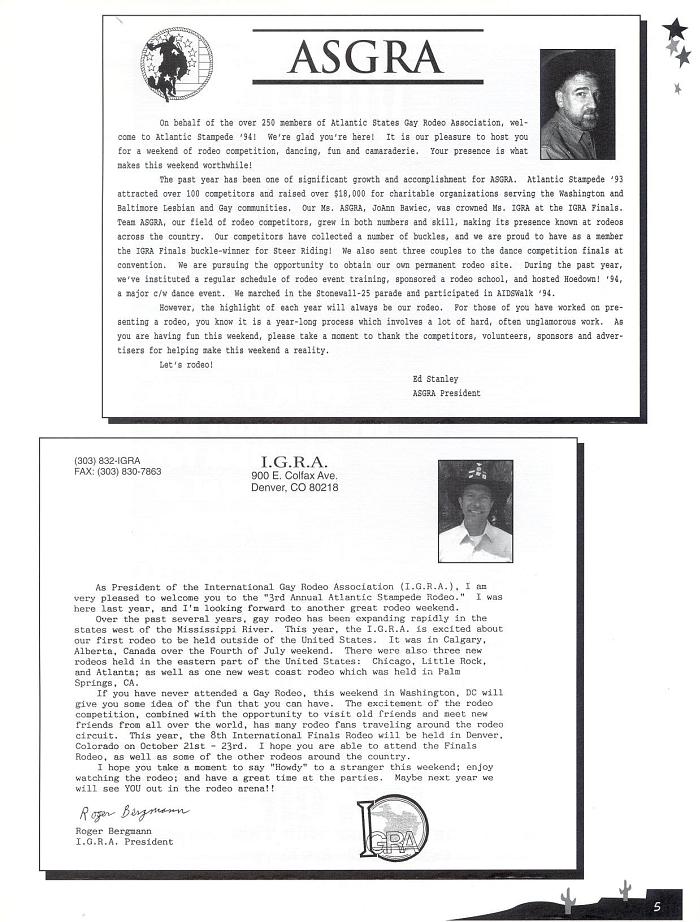
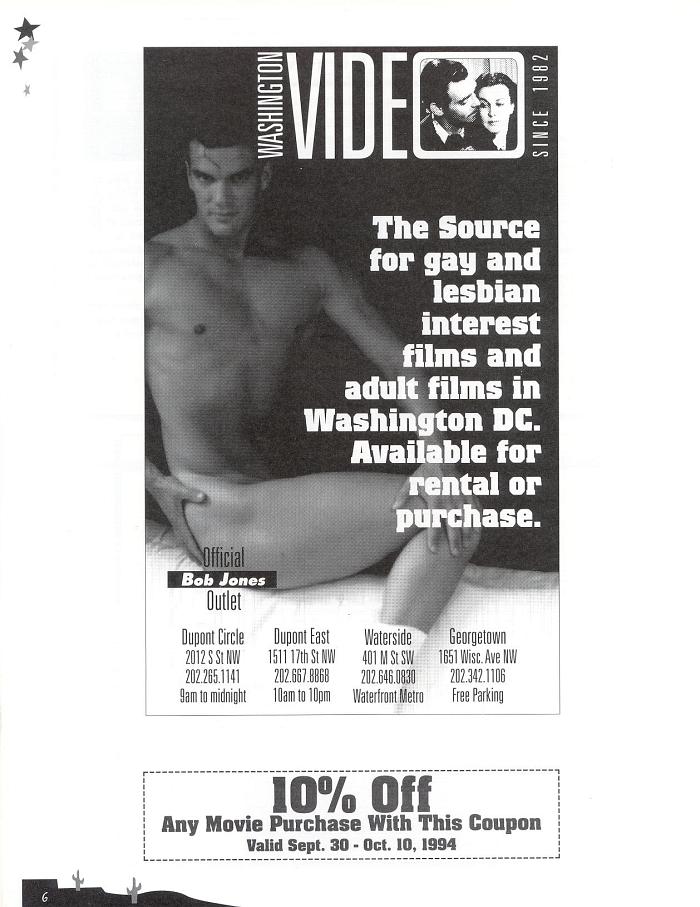
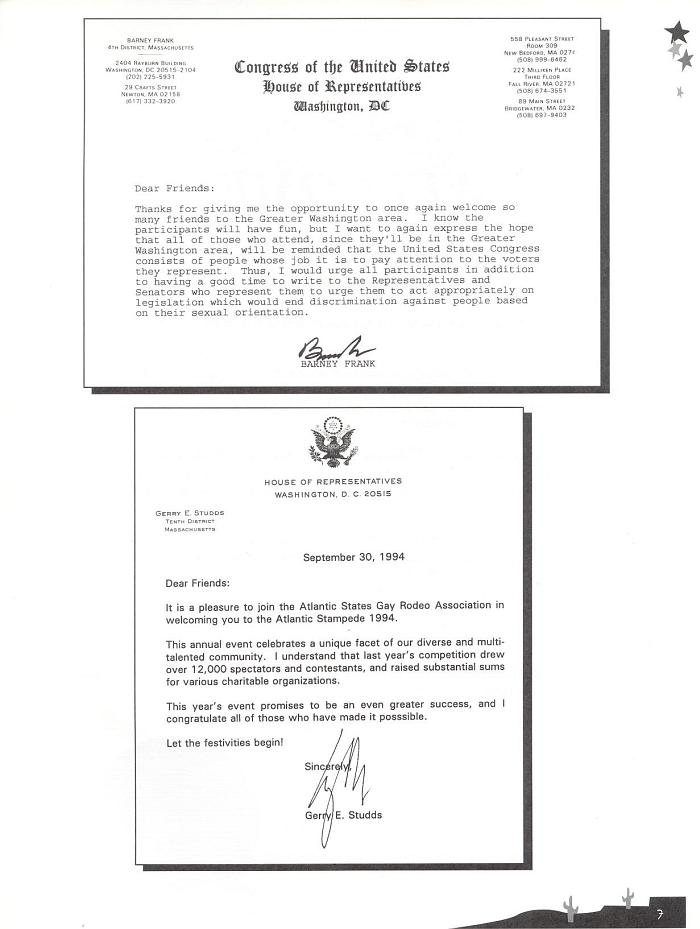
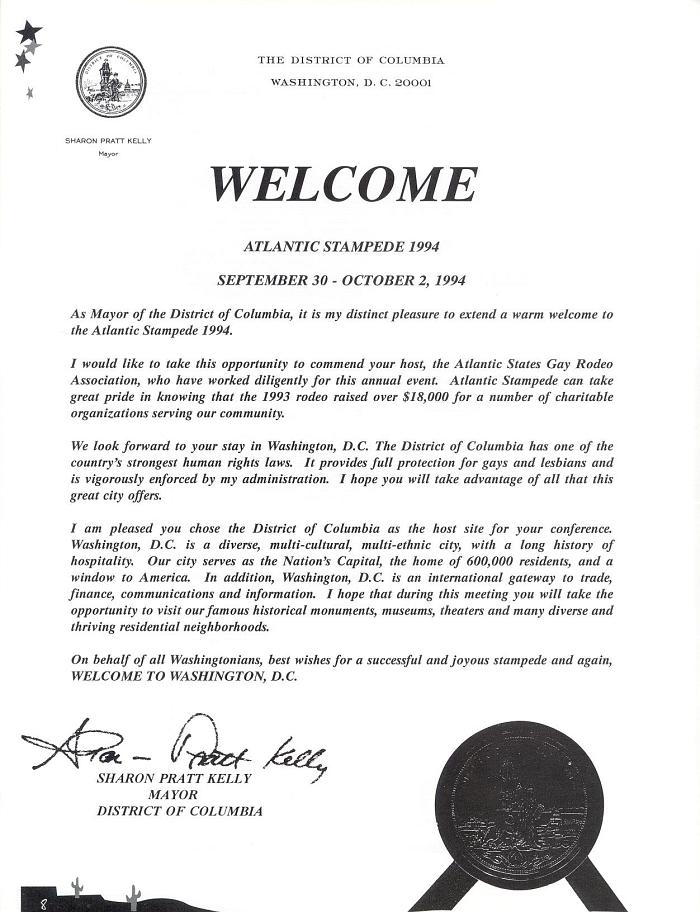
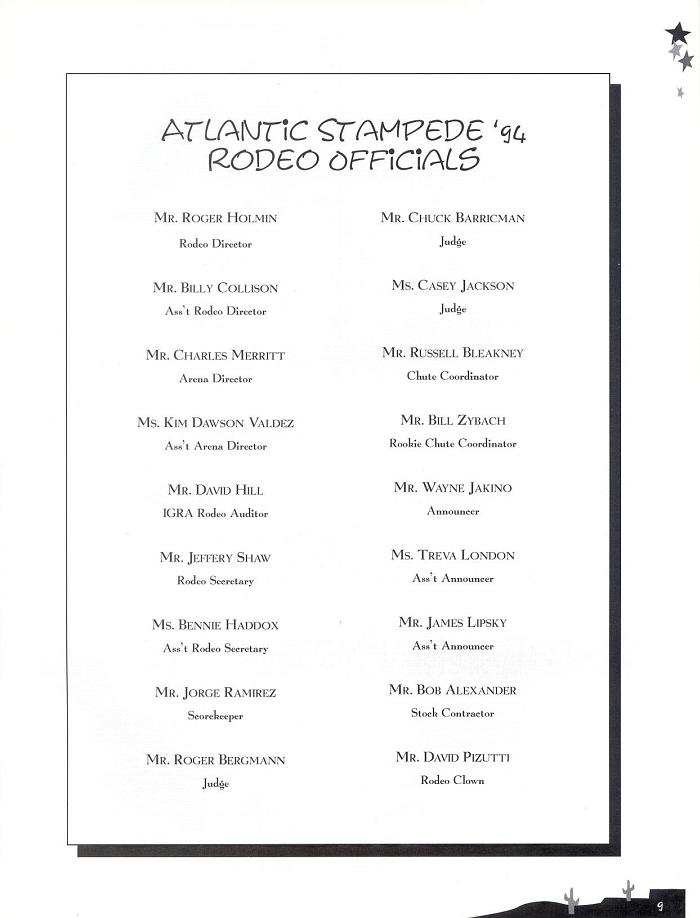
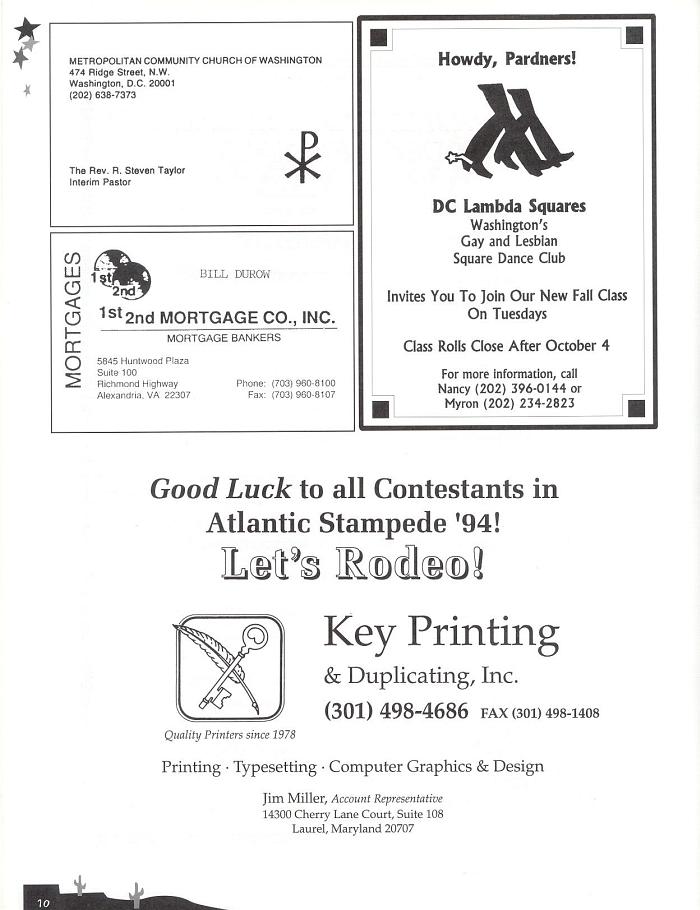
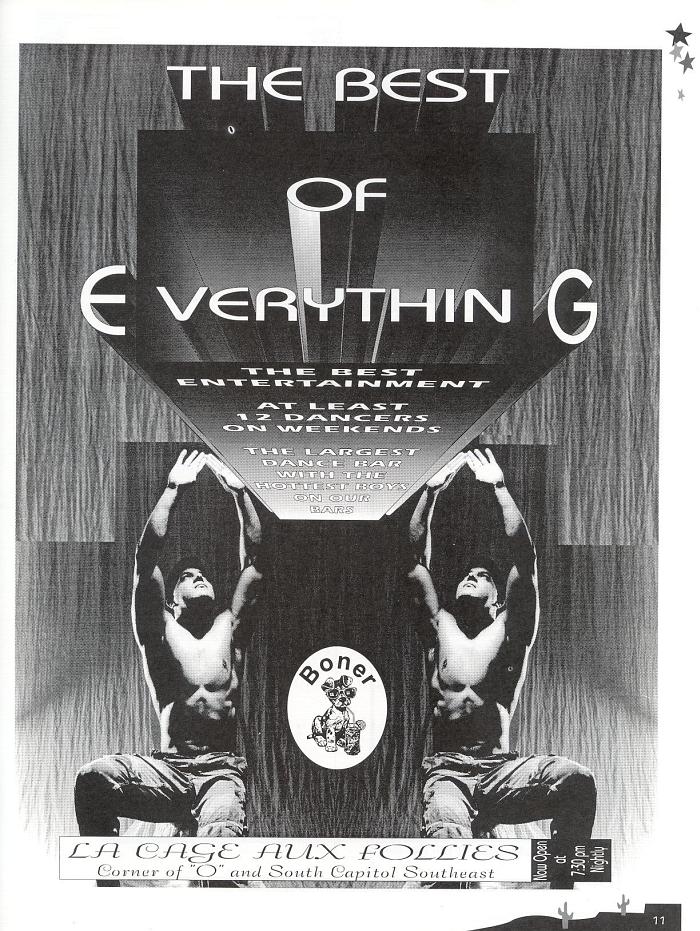

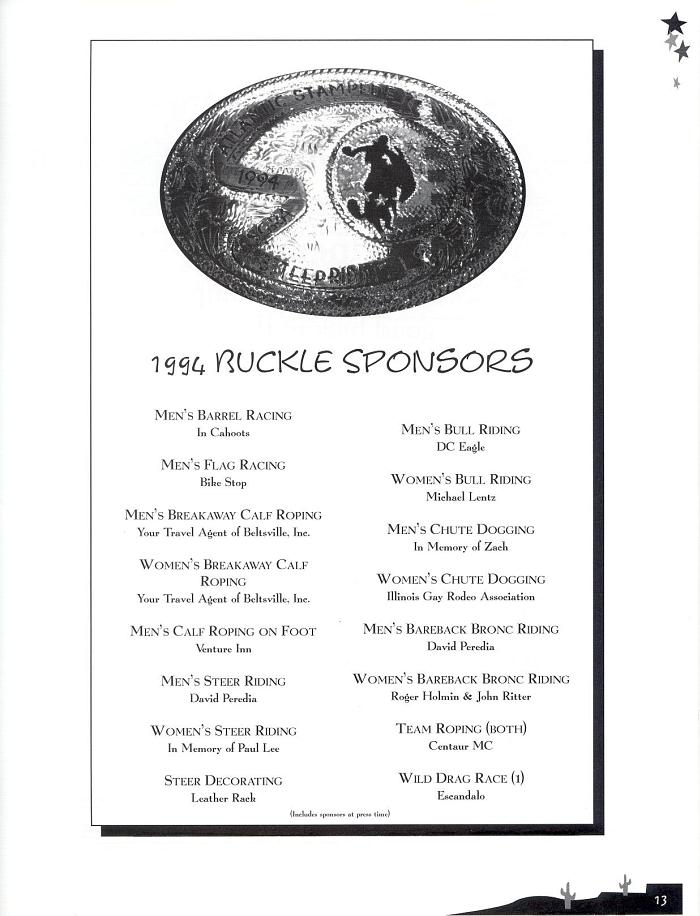


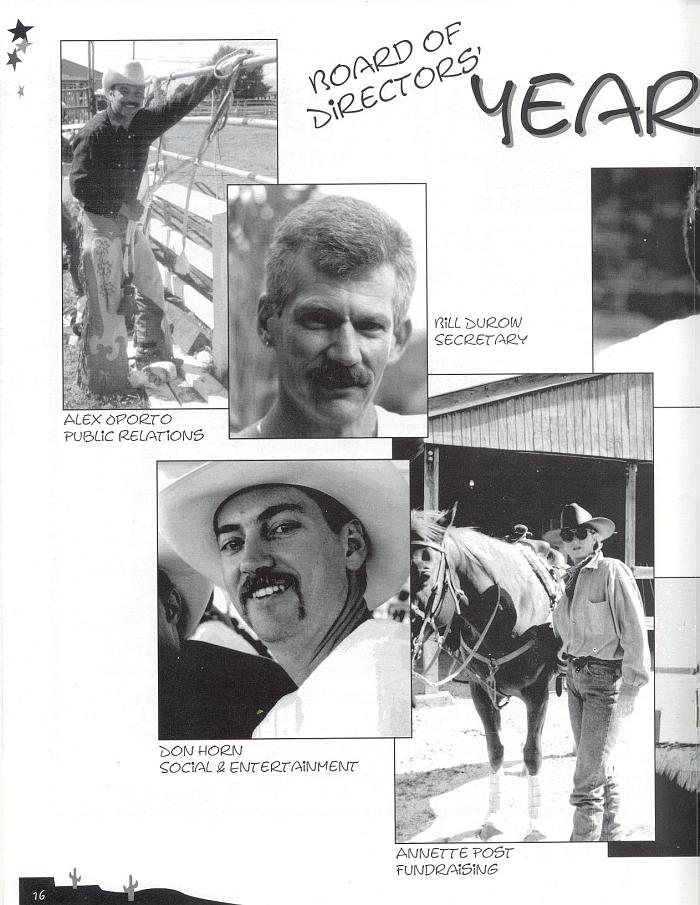
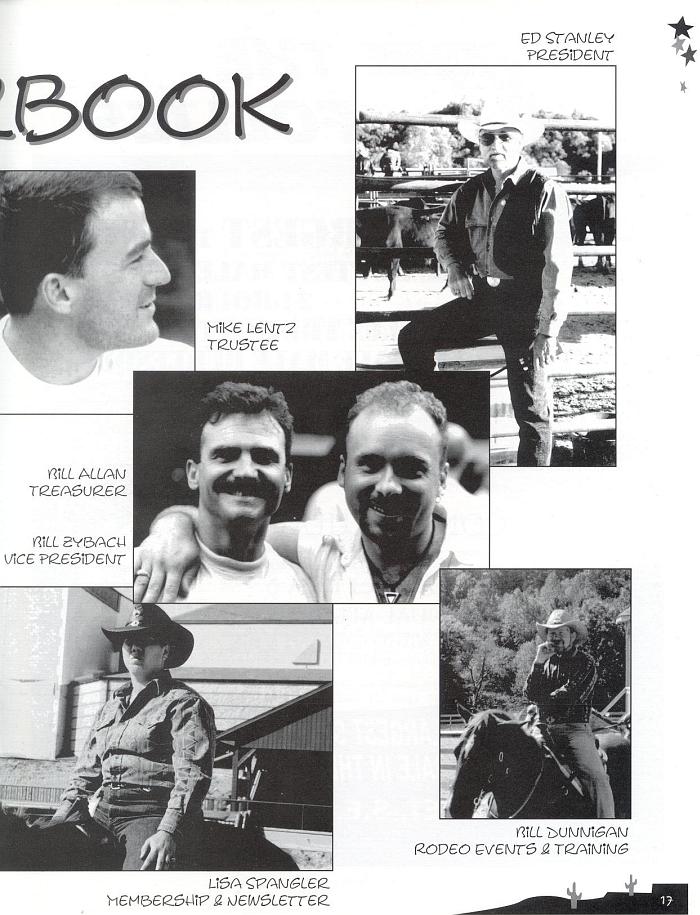
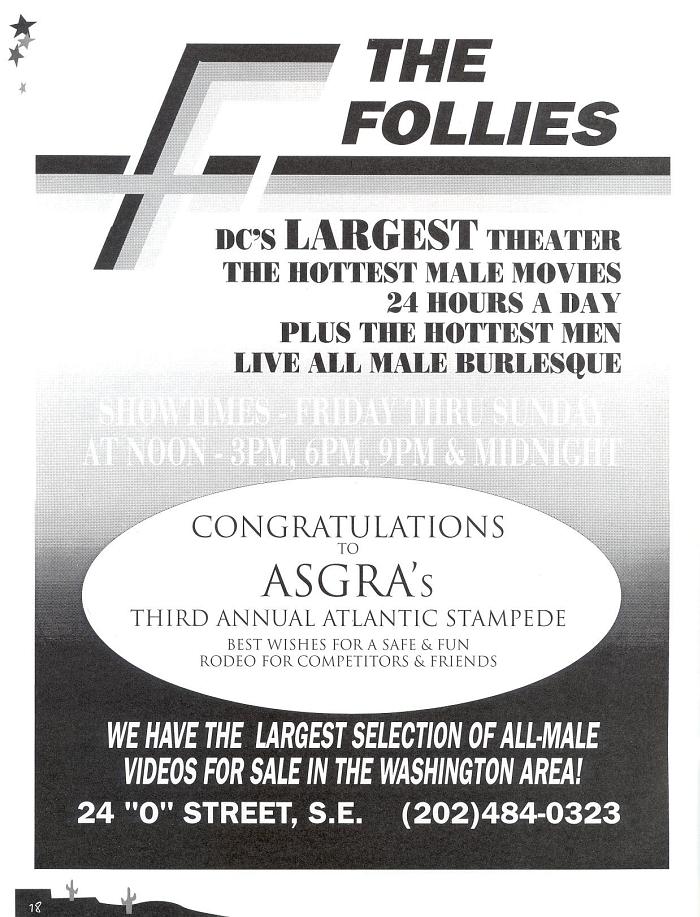
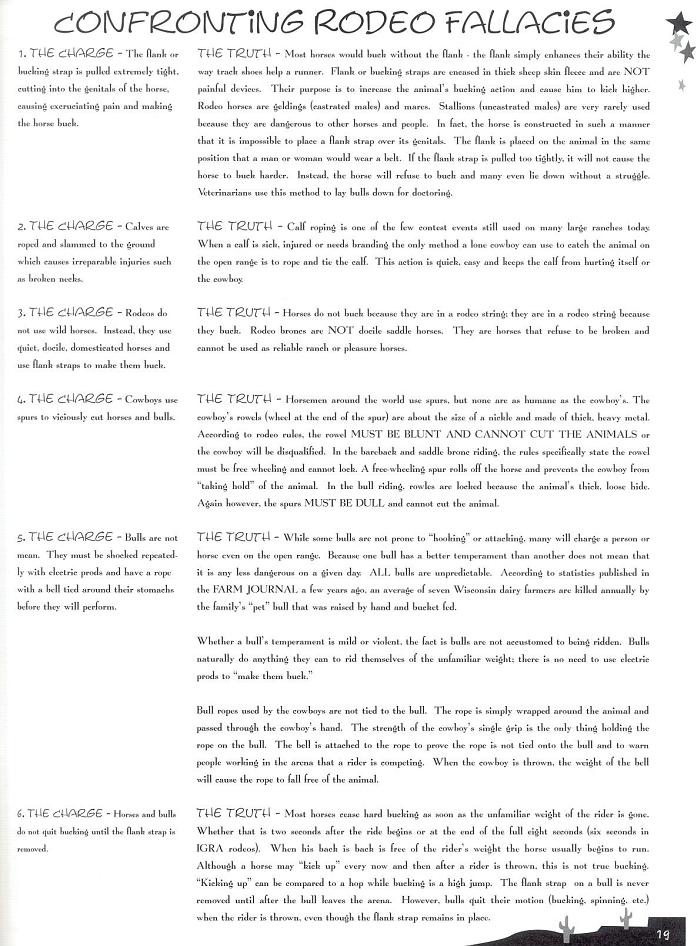
Confronting Rodeo Fallacies
- The Charge: The flank or bucking strap is pulled extremely tight, cutting into the genitals of the horse, causing excruciating pain and making the horse buck.
The Truth: Most horses would buck without the flank, the flank simply enhances their ability the way track shoes help a runner. Flank or bucking straps are encased in thick sheep skin fleece and are NOT painful devices. Their purpose is to increase the animal's bucking action and cause him to kick higher. Rodeo horses are geldings (castrated males) and mares. Stallions (uncastrated males) are very rarely used because they are dangerous to other horses and people. In fact, the horse is constructed in such a manner that it is impossible to place a flank strap over its genitals. The flank is placed on the animal in the same position that a man or woman would wear a belt. If the flank strap is pulled to tightly, it will not cause the horse to buck harder. Instead, the horse will refuse to buck and many even lie down without a struggle. Veterinarians use this method to lay bulls down for doctoring.
- The Charge: Calves are roped and slammed to the ground which causes irreparable injuries such as broken necks.
The Truth: Calf roping is one of the few contest events still used on many large ranches today. When a calf is sick, injured or needs branding the only method a lone cowboy can use to catch the animal on the open range is to rope and tie the calf. This action is quick, easy and keeps the calf rom hurting itself or the cowboy.
- The Charge: Rodeos do not use wild horses. Instead, they use quiet, docile, domesticated horses and use flak straps to make them buck.
The Truth: Horses do not buck because they are in a rodeo string: hey are in a rodeo string because they buck. Rodeo broncs are NOT docile saddle horses. They are horses that refuse to be broken and cannot be used as reliable ranch or pleasure horses.
- The Charge: Cowboys use spurs to viciously cut horses and bulls.
The Truth: Horsemen around the world use spurs, but none are as humane as the cowboy's. The Cowboy's rowels (wheel at the end of the spur) are about the size of a nickel and made of thick, heavy metal. According to rodeo rules, the rowel MUST BE BLUNT AND CANNOT CUT THE ANIMALS or the cowboy will be disqualified. In the bareback and saddle bronc riding, the rules specifically state the rowel must be freewheeling and cannot lock. A free-wheeling spur rolls off the horse and prevents the cowboy from "taking hold" of the animal. In the bull riding, rowels are locked because the animal's thick, loose hide. Again however, the spurs MUST BE DULL and cannot cut the animal.
- The Charge: bulls are not mean. They must be shocked repeatedly with electric prods and have a rope with a bell tied around their stomachs before they will perform.
The Truth: While some bulls are not prone to "hooking" or attacking, many will charge a person or horse even on the open range. Because one bull has a better temperament than another does not mean that it is any less dangerous on a given day. ALL bulls are unpredictable. According to statistics published in the FARM JOURNAL a few years ago, an average of seven Wisconsin dairy farmers are killed annually by the family's "pet" bull that was raised by hand and bucket fed.
Whether a bull's temperament is mild or violent, the fact is bulls are not accustomed to being ridden. Bulls naturally do anything they can to rid themselves of the unfamiliar weight: there is no need to use electric prods to "make them buck."
Bull ropes used by the cowboys are not tied to the bull. The rope is imply wrapped around the animal and passed through the cowboy's hand. The strength of the cowboy's single grip is the only thing holding the rope on the bull. The bell is attached to the rope to prove the rope is not tied onto the bull and to warn people working the arena that a rider is competing. When the cowboy is thrown, the weight of the bell will cause the rope to fall free of the animal.
- The Charge: Horses and bulls do not quit bucking until the flank strap is removed.
The Truth: Most horses cease hard bucking as soon as the unfamiliar weight of the rider is gone. Whether that is two seconds after the ride begins or at the end of the full eight seconds (six seconds in IGRA rodeos). When his back is free of the rider's weight the horse usually begins to run. Although a horse may "kick up" every now and then after a rider is thrown, this is not true bucking. "Kicking up" can be compared to a hop while bucking is a high jump. The flank strap on a bull is never removed until after the bull leaves the arena. However, bulls quit their motion (bucking, spinning, etc.) when the rider is thrown, even though the flank strap remains in place.

Who Attacks Rodeo & Why
Rodeo is well received in many communities, but like every other possible use of animals, from hunting and the wearing of fur to animal research and farming practices, animals use has problems in the way it is perceived by a society that is three-to-four generations removed from the farm.
In today's ever-growing urban population, fewer and fewer people have had any experience working and living with horses and cattle. People who do not understand large animals and their needs are vulnerable to manipulation of the facts.
Some of the people who oppose rodeo and other animal uses are well meaning individuals wanting to do something to prevent animal cruelty. Unfortunately, their views are often based on contrived, sensationalized materials designed by people who cannot be credited with the same worthy intentions.
The simple truth is that organizations that do little or no hands-on animal care work exist solely to change people's attitudes towards animals' use must have a target to exploit that will stir people and cause them to give freely of their money.
Rodeo's vulnerability rests mostly on the fasts that as a sport and entertainment event it is easier to criticize than an animal enterprise that may be looked upon as a necessity, such as meat production.
If rodeo were not a profitable target for certain groups, it would make no sense for them to bother with it, because in terms of number of animals, rodeo is very small.
In all of rodeo, there are about 20,000 bucking horses and bulls, and they kick up their heels in fine fashion for many years. Bulls are bucked until the age 10-15, and many horses are still going strong at age 25.
Compare this to the fact that 15 million homeless dogs and cats are destroyed each year and the figure has not improved in 20 years! Why do these groups give high priority to 20,000 rodeo animals that live a ling life instead of putting their resources to work correcting the suffering inherent in the ongoing problem of unwanted animals?
The truth is, some of the animal right activists have an agenda so bizarre, they believe companion animals represent a form of slavery and they would not impose any kind of restrictions of the animal's freedoms.
There are reasonable and good people in some local animal welfare organizations who work with recreational and commercial users of animals. Unfortunately, they are overshadowed by mushrooming numbers of extremists and charlatans.
"Confronting Rodeo Fallacies" and "Who Attacks Rodeos & Why" reprinted (in original program) with permission from To Protect An American Tradition For The Next Generation, published in 1991 by the International Rodeo Association. Humane Activities Office
